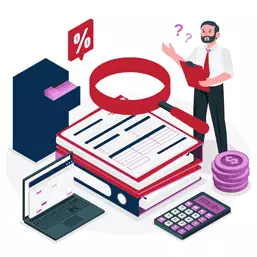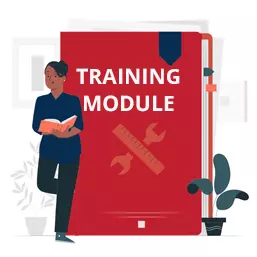
Examples of Collaborative Business Writing
No one can whistle a symphony. It takes a whole orchestra to play it.
– H.E. Luccock
Introduction
Writing that is produced through collaboration is an essential component of every successful organization, and it can serve a variety of functions. It has been demonstrated that writing in groups and teams can assist in the process of problem-solving, critical thinking, and even the development of social skills. Companies will take advantage of the offer made by knowledgeable employees and make use of collaborative writing for a variety of projects and activities for a variety of reasons, including those listed above.
Writing Emails
Even while collaborative writing is more typically done for larger group tasks, it is not wholly neglected for smaller projects either, such as composing memos or emails. The most prevalent use of collaborative writing is for larger group projects. Because the internet enables participants to join online and contribute their portion whenever it is convenient for them, collaborative emails are widespread among a group of employees working together on a project. Although they can also be used for mass email campaigns, the majority of collaborative emails are sent by a group representative to a third party, such as a manager or supervisor.

An email report is one example. In this type of report, a number of employees each send a copy of their contribution to an editor who has been appointed for that purpose. The information contributed by each person is compiled by this editor into a single coherent email, which is then forwarded to the relevant manager, team leader, or supervisor. At this stage, the recipient is able to view all of the contributions at the same time, but they still retain the ability to respond with individual messages if necessary. Communications such as project status reports and meeting minutes are typical instances of collaborative emails (which include email updates from team members)
- Email marketing campaigns (different parts written by different writers)
- Newsletters sent via e-mail (including articles written by a group of contribution writers)
Brief check
Avoid multi-voice projects with no agreed-upon voice. A style sheet can help with this. Establish a team member or people as editors to assess the final manuscript for voice and tone.

Putting Together Reports
Because they enable workers from a variety of departments and job titles to aggregate their information into a single source, collaborative reports are a fairly prevalent type of tool used in businesses. Even though there are a variety of approaches to the formation and design of collaborative reports, the process is, for the most part, consistent. The many aspects of the report that need to be completed are typically delegated to various members of a group of people, who are then tasked with finishing those aspects by a predetermined date.
A person is generally designated as the team leader or editor, and this person is in responsibility of gathering the various components of the project from the many contributors and putting everything together for some form of presentation. After it has been put together, the report is capable of displaying information from a number of distinct departments and providing a variety of viewpoints from people who were involved in the project or assignment. Examples of common collaborative reports include annual reports given to shareholders, sales and marketing reports for a specific department, and progress reports given to higher management.
Writing Training Manuals
It is possible to write training manuals for a variety of goals, such as the training of employees, the training of individuals to learn something new, or the training of individuals to learn how to operate materials and equipment. They are typically an extremely difficult and time-consuming process to do. Even if it is possible for just one person to do them, it is typically not suggested because of the difficulty of the project as well as the requirement for objective teaching.

If you are tasked with developing any kind of training manual, it is highly recommended that you separate these topics into various sections so that writers and trainers can develop them separately. Typical sections consist of an introduction to the new information, several modes of instruction, teaching and learning examples, a conclusion of some kind, and a section for extra assistance and resources. If numerous writers cooperate on one section independently and then share their work with the other writers at the end of the project, these guides can be produced in a short amount of time and distributed to their trainees in a far shorter amount of time. Examples of collaborative training manuals that are commonly used include:
- Training manuals for new staff
- A training manual for a specific skill (such as public speaking, creative writing, or any number of other skills)
- A training manual for operating certain pieces of equipment
Brief check
Avoid the inclination to engage in groupthink, in which participants are more concerned with getting along and becoming friends than with the project's aim.
Putting Together Company Guidebooks
There are a variety of purposes that can be served by producing a company handbook; however, in most cases, the handbook’s primary function is to define the firm and educate its readers on the various components that make up the business. These handbooks may contain information such as assertions about the firm’s mission, its history or facts, employee information, and even means to access additional information about the company (such as through a public relations manager or human resources).
The amount of content that is included in a company’s handbook might result in its handbook taking up a variety of different amounts of physical space. Handbooks that are designed to be given to new employees or customers will contain additional information about the history of the organisation as well as the type of work that they are performing at the present time. The reader and the ways in which the reader can learn more about the company may be the primary focus of corporate handbooks written for institutions such as universities or charitable organizations. In any case, the completion of handbooks is most efficient when done by members of a group working together. Since handbooks need to have information about the entire company, it is ideal to gather written pieces from the many departments, such as human resources, accounting, marketing, or even administration. This is because handbooks require information about the firm. The information that is provided for the project by the representative of the department is comprehensive and objective when it is contributed to the project. As a result, the final handbook is an excellent illustration of the many different features of the firm. Examples that are typical of collaborative company handbooks include: company handbooks that are given to potential customers
- Handbooks of a company that are given out to students attending a university or college
- Handbooks of the company are distributed to newly hired personnel
Practical Application
Angela couldn’t contain her enthusiasm about the upcoming opportunity to participate in a group effort for the development of a new training handbook. Although she had experience working on joint reports in the past, she was aware that working on the manual would be a more significant undertaking.
Angela was given her share of the project to work on following the first meeting, and she immediately set out to accomplish it. Angela checked in with some of her other team members and learned what they were working on in the downtime that she had between sessions. Angela found it interesting to see what parts of the handbook each of the other people had to work on because many of them were assigned to focus on different sections or goals of the manual. As the due date drew closer, Angela and the rest of her team got together to combine all of the completed components into a single finished product.
Angela found that working on the handbook brought her more satisfaction than any of the other group projects that she had participated in, which is why she requested that the team leader keep her in mind for any future initiatives.





